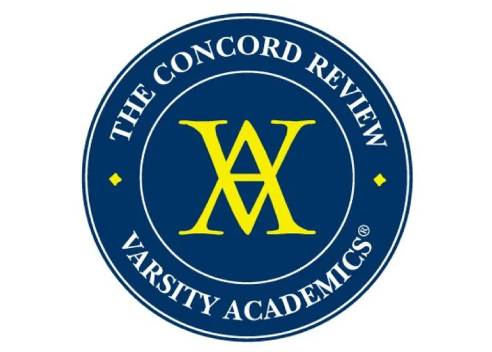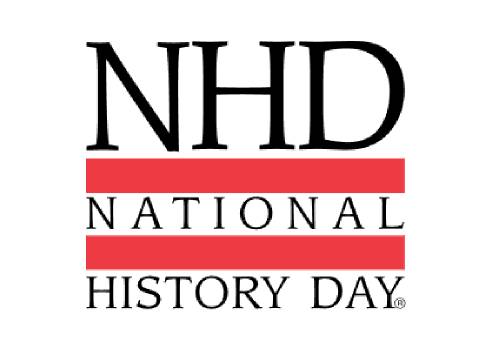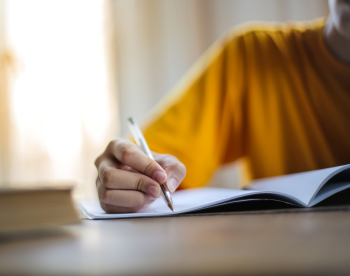15 Creative Research Ideas for High School Students
As an ambitious high school student, exploring research projects is an excellent way to enhance your academic profile and skills. There is no need to rush into determining your future major, but having a general preference for a particular field will benefit you greatly. Committing to research not only highlights your passion for a specific topic, but also hones your critical thinking and problem-solving skills, provides hands-on lab experience, and enhances your analytical and presentation skills. Through your research, you'll add flair to your college applications while building a solid foundation for a future academic or professional career.
Here are 15 topics recommended by the Embark mentoring team for high school students to conduct research on, which will be categorized by discipline
If you are worried about your research direction, why not try the Embark Exploration Program ! This program is like a bridge that connects the curious you with top scholars from around the world. Here, you will receive one-on-one professional guidance from experts every step of the way, from research design to thesis writing. What's even more exciting is that they'll also help you get your research published so that your voice can be heard by more people!
Biology Research Ideas for High School Students
1. 3D culture: multicellular 3D organoid culture of tumors for drug screening strategies
To simulate the microenvironment of tumors in vivo, we can add tumor-associated fibroblasts CAF for co-culture to form 3D multicellular tumor-like organoids. Through this platform, we can better evaluate the effect of drugs on tumors and provide a good bridge between cells and animals for drug development.
2. Enabling brain science exploration through imaging technology
In recent years, quantitative magnetic resonance techniques have been used to explore the integrity and functionality of myelin, further unlocking the mysteries of the human brain. However, the high complexity and long post-processing time of these imaging tools require further exploration. In this project, we will explore simpler and faster imaging techniques or post-processing methods, hoping to find effective ways to help further explore brain science.
3. Using AI to help visually impaired people with color recognition
Globally, at least 2.2 billion people are nearsighted or farsighted, and a large proportion of them have difficulty distinguishing colors. This project aims to help visually impaired people recognize colors by using AI technology and graphic processing to convert colors into sounds so that they can perform everyday tasks more easily and quickly.
4. Does drinking "zero-sugar" beverages affect our learning memory?
This project uses nematodes as model organisms to first determine the effects of different concentrations of aspartame on learning memory, then further study the genetic regulation of nematode genes by aspartame, determine the genetic mechanism by which aspartame affects learning memory, and finally determine the conservativeness of the target genes with their human homologs and further explore the molecular mechanism by which the target genes regulate learning memory.
5. Application of ultraviolet photocatalytic technology in the removal of micropollutants from water bodies
During the project, we will explore in depth the principles and development of UV technology, its application in purifying the water environment, and grasp the basic water environment and the distribution of micropollutants in water and their hazards. Through experiments, we try to apply different UV light treatment processes and catalysts to find the appropriate UV catalytic technology and experimental conditions.
Physics Research Ideas for High School Students
6. Segmentation algorithms for unstained cell images
For biological cell imaging, automatic segmentation of image cells is a common feature. In this project, a segmentation method based on topological mathematical morphology is used to realize simple cell segmentation, which will be widely used in medical image segmentation and recognition.
7. Burning hot water for refrigeration? Waste Heat Recovery Absorption Refrigeration System Research
This project focuses on the method of refrigeration if waste heat resources are utilized in the context of an energy crisis. Firstly, using the system design software, secondly, using the Nist database, to simulate the thermophysical properties of the refrigerant; thirdly, in the Matlab platform, carry out one-dimensional computational simulations and predict the system performance under different cooling capacities, waste heat, and operating parameters; finally, carry out the data analysis and structural optimization of the system parameters to determine the system cycle parameters.
Environmental Science Research Ideas for High School Students
8. Impact of volcanic eruptions on El Niño
The purpose of this study is to reveal the effect of weakening radiation on El Niño. The tool used is a medium-complexity coupled sea-air model of the tropical Pacific Ocean, which examines the response of El Niño under different radiation intensities and contributes to a deeper understanding of the El Niño phenomenon.
9. Species distribution dynamics and biodiversity conservation hotspot assessment in the context of climate change
This project aims to study the impact of climate change on the distribution of plant and animal species. The R language is used to construct species distribution models to assess the impacts of major environmental factors on species distribution and to explore the dynamics of species distribution of different functional types under different carbon emission scenarios in the future, to assess key areas for biodiversity conservation.
Psychology Research Ideas for High School Students
10. Characterization of language impairment in autistic individuals
This study proposes to use network analysis to explore the characteristics of language impairment in individuals with autism. Different from the traditional latent variable model, network analysis focuses on the interactions among observed variables, and can explore the importance of different observed variables in the network and the extent to which they affect other variables through indicators such as centrality and aggregation coefficient.
11. Research on Public Elderly Demand from the Perspective of Feasibility Theory
All countries in the world are facing the serious challenge of population aging, and governments have formulated different policies to cope with this challenge. Against the background of limited government resources and conditions, this project is based on Amartya Sen's viability theory, which examines the social structural, group, and individual psychological factors that affect the public's demand for old age care, to understand the real need for the elderly and the various capabilities they still possess.
12. Empowering the Future: Examining the Development of Self-Advocacy Skills among Minority Low-Income High School Students
The expected outcome of this study is to make practical recommendations for educational institutions and policymakers. These recommendations will center around the development of effective interventions that enable students to confidently advocate for themselves. In doing so, we aspire to create an educational environment that promotes both academic success and personal growth, breaking down the barriers for minority, low-income high school students and putting them on a path to a brighter future.
Computer Research Ideas for High School Students
13. Messaging, Belief Updating and Financial Markets - A Text Analytics-Based Study
It is unrealistic to manually recognize hundreds of millions of levels of text datasets every day, so we want to use AI algorithms to solve this problem to make the site a place where users can feel comfortable sharing their knowledge with the world. In this project, we will work together to learn, propose, and train some mainstream Natural Language Processing (NLP) models to automatically detect such texts.
14. Two-photon microimaging
Two-photon micro-imaging technology has many features such as small optical damage, small bleaching area, strong penetration ability, high resolution, high fluorescence collection rate, and suitable for multi-marker composite measurements, etc. It can be applied to in vivo optical imaging of small animals, and it has a wide range of applications in the fields of tumor immunotherapy, gene therapy, stem cell research, drug screening and evaluation, and imaging of in vivo spinal cord injuries.
15. A novel Parkinson's early diagnosis system based on machine learning and stylus pressure analysis
Parkinson's disease (PD) is a common neurodegenerative disease, common in the elderly, with an average age of onset of about 60 years, and the condition will seriously affect life if not controlled in time. There are different degrees of aging in countries all over the world, and timely detection of Parkinson's symptoms is needed. In this project, we are going to give recommendations about the diagnosis of Parkinson's disease by reading the patterns formed when writing and the pressure of the pen tip.
Also, these research ideas can be used to participate in the following international events.
S.-T. Yau High School Science Award
The S.-T. Yau High School Science Award is an award for secondary school students in the category of science innovation initiated by the master of mathematics, Mr. Shing-Tung Yau, in 2008. It is hosted by Tsinghua University, organized by the Tsinghua University Shing-Tung Yau Center for Mathematical Sciences, and has been selected to be part of the Ministry of Education's white list of competitions for the academic year 2022-2025.
Since its inception, more than half of the award-winning students have been enrolled in Tsinghua University, Peking University, Harvard University, Yale University, and other famous Chinese and foreign schools. At the same time, the competition has received attention from prestigious colleges and universities such as Princeton and MIT in the U.S. This award is also known as the knocking brick for quality colleges and universities, which is very advantageous in applying for foreign universities.
Benefits of the Yau Science Award
Wide Range of Participation
More than 1,500 schools and 7,300 teams participated in the competition, covering 28 provinces, municipalities, and autonomous regions in China and many overseas regions such as North America and Singapore. A total of 482 students from 230 teams were awarded. 240 scientists from around the world served as judges or advisors.
Application Assistance
More than one-half of the award-winning high school students were recommended to Tsinghua University, Peking University, Harvard University, MIT, Yale University Princeton University, etc., and many of them are still insisting on their academic research after entering their ideal universities.
High Impact
Since 2013, Tsinghua University has incorporated the S.-T. Yau High School Science Award
Into the independent enrollment system, supporting all relevant faculties and departments to assess the outstanding award-winning students, and students with qualified grades will be qualified to be recommended for independent enrollment at Tsinghua University, and have the opportunity to enjoy the preferential policy of being admitted to the college entrance examination down to a maximum of one line. Since 2016, Fudan University has included the winners of the S.-T. Yau High School Science Award into its independent enrollment program.
Eligibility: Chinese students worldwide in grades 9-12
Awards:
Individual prizes are offered in all six subjects:
1 Gold Award、1 Silver Award、3 Bronze Prizes、5 Winning Prizes.
The prizes are 50,000 RMB for the Gold Prize, 30,000 RMB for the Silver Prize, 10,000 RMB for the Bronze Prize, and 0.5 million RMB for the Winning Prize, and the winning teams will be awarded trophies and certificates. Some of the winners were able to get recommendation letters from mentors of famous schools.
China Thinks Big
China Thinks Big (CTB) is an international high school student innovation program that promotes social innovation through academic research and social practice. Originating from Harvard Thinks Big, a traditional research project presentation program at Harvard University, CTB is a highly influential interdisciplinary challenge program for Chinese youth around the world, starting from university-aligned subject knowledge, focusing on the life around us, and using academic methodologies of prestigious schools as a blueprint, with original ideas and innovative solutions to practice the "Make a Difference" principle. The program practices the spirit of "Think Big, Start Small", improves college readiness, serves the talent cultivation and selection of famous domestic and international universities, and solves the social problems around us.
Benefits of participating in CTB
Endorsement by the world's top scholars
CTB's nearly 100 judges are composed of professors from world-renowned universities, Nobel Prize winners, Pulitzer Prize winners, and experts and scholars in various fields.
Brick to Famous Schools at Home and Abroad
Previous winners of the challenge have emerged as top scorers of college entrance exams in many provinces, with nearly 100 students who have been admitted to world-famous schools at the Vine level, such as Harvard and Yale, as well as nearly 1,000 students who have been admitted to domestic universities for independent enrollment. In the past few years, CTB Forum has become an important award basis in the system of higher education such as admission to overseas universities and independent enrollment in domestic universities.
Eligibility: 9th-12th grade students, individual participants/teams of less than 10 students.
Note: Nationality and age requirements apply, teams of 4 - 10 participants are required, and only one CTB program is allowed for any one individual in any one year.
Awards:
Online stage: proof of online course completion, CTB completion certificate, regional submission nomination.
National Stage: CTB National Forum Finalist Certificate, CTB National Forum Completion Certificate, CTB eLibrary Project Inclusion, CTB Best Collaborative Team, CTB National Forum Proceedings Inclusion, Editor's Choice Project.
Global Station: Team Gold, Silver, and Bronze Awards, Team Individual Gold, Silver, and Bronze Awards, Hackathon Awards, Global Forum Completion Certificate, Global Forum Finalist Certificate.
Regeneron International Science and Engineering Fair
ISEF is organized by the Society for Science and the Public, which aims to encourage students to work in teams and to study their topics of interest in depth and for a long period. ISEF is the world's largest, most prestigious, and highest-ranked scientific research competition for middle school students, and is therefore known as the "World Cup" of youth science competitions in the world, and is one of the high-level scientific research competitions recommended by MIT's official website! The finalists and winners of the competition are the top schools of Harvard, Yale, Princeton, and MIT competing for the students.
Benefits of participating in ISEF
Academic Competence
The competition to study abroad is getting more and more intense, and there are many applicants with outstanding standardized scores. Comprehensive information from the official website of Top American, admissions officers say that they most want to see a certain research ability from international students, especially Chinese students, and ISEF's status in the academic world is undoubtedly an excellent choice.
Research Potential
For Top American, a well-documented research experience is an important factor in determining whether a student is truly passionate about a field and has the potential to become a future leader in that field. Being able to participate in ISEF in high school, and completing a research project that can only be studied at the college level and beyond, demonstrates a student's ability to explore a particular field in depth, as well as his or her academic potential.
Resume Reflections
One of the extracurricular activities listed on the Common App or other application forms for U.S. colleges and universities is research, ISEF participation can be a great way to demonstrate your research accomplishments, and an ISEF finalist experience is a great way to get noticed at the application stage.
Eligibility: Open to high school students in grades 9-12 worldwide.
Awards:
First, second, third, and fourth prizes are awarded in each of ISEF's 21 categories.
Special prizes are selected for the first prize in each entry category:
George D. Yancopoulos Innovator Award
Regeneron Young Scientist Awards (2)
The Gordon E. Moore Award for Positive Outcomes for Future Generations
Craig R. Barrett Award for Innovation
H. Robert Horvitz Prize for Fundamental Research
The Peggy Scripps Award for Science Communication
Embark has more than 3,000 mentors from Ivy League, MIT, Caltech, Johns Hopkins JHU, Carnegie Mellon CMU, Top 30 U.S. Universities, State Key Laboratories, G5 in the UK, Max Planck in Germany, ETH Zurich, NUS, and other world-renowned universities, to mentor students through a customized one-on-one research training program. Through one-on-one customized scientific research training, we have won nearly 1,000 awards in the world's top scientific research competitions and helped our students successfully enter the world's most prestigious universities, such as Harvard, Stanford, Princeton, Oxford, Cambridge, and so on. If you want to participate in international competitions but are struggling to find a mentor, please contact us for help.



